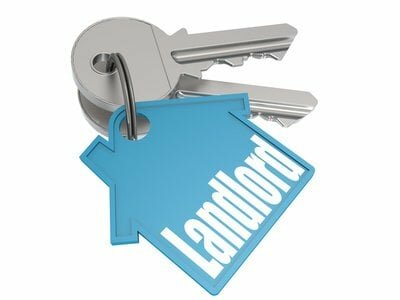Becoming a landlord is one of the easiest ways to invest in real estate. If you have a little extra money, property prices in your area are low, and rent rates are profitable, now may be the time to invest in real estate to generate additional monthly income. During these trying times of COVID-19, the real estate market has continued to flourish - in no small part due to historically low-interest rates. Low-interest rates are an important key that allows beginning landlords to finance a rental property at an interest rate that makes the effort financially worthwhile.

1. Research the best investment area near you. Experienced investors sometimes venture outside of their own backyard but for beginning landlords, it’s wise staying close to home. You can keep your maintenance costs low by doing some of the maintenance yourself. Being able to periodically inspect your investment also brings peace of mind to the new landlord. Get started by researching neighborhoods near you that are known for the features that quality tenants are willing to pay top dollar for. Quality of life neighborhoods feature a good school district, walking distance to stores and amenities, and have a short commute to decent-paying jobs. House specific niceties include three or more bathrooms, a master suite, and stainless steel appliances in the kitchen. This is also the recipe for an investment that will appreciate in value along with providing a monthly income.
2. Crunch the numbers. Once you find the house that meets your basic requirements, it’s time to crunch the numbers before doing anything else. Although interest rates are low, qualifying for an investment mortgage still comes with stringent requirements. You can expect to need a 20% down payment. You can easily use an online mortgage calculator to crunch the numbers to see what your monthly mortgage payment will be. Other information that you’ll need includes the property taxes, insurance, and maybe HOA fees. Also, factor in about 10% for maintenance and repair costs. Of course, you’ll need to learn how much similar houses in the neighborhood are renting for. Your monthly rent goal is 1% of the value of the house. A $150,000 house should rent for about $1,500 a month.
3. Make your purchase offer contingent upon the home inspection. Even if you won’t be living in the house, you want to invest in a house that is structurally and functionally sound. Have a professional inspection done before putting your money on the table. If significant repairs or upgrades are needed, you can either factor these into your purchase offer or negotiate with the seller to make the needed changes.
4. Consider making improvements, but don’t over-improve. If you’re looking for a good deal, the house will probably have some neglect or be out of date. If you do make improvements, be sure they match the other houses in the neighborhood. High-end kitchen counters are nice but they won’t do much for the home value or rent if most houses in the neighborhood have linoleum. There can be a fine line between making income-enhancing improvements and over-improving to the point you will never see a return on your investment. Of course, you need to factor in the cost of any improvements along with holding costs during the vacancy.
5. Have a maintenance plan. Generally, state and local regulations require that landlords maintain the house in a “habitable” condition. At a minimum, this means working plumbing (with hot water), heating, electrical, appliances, and a dry house. Any of these can be costly to repair. A basic mistake made by new landlords is not having a reserve fund to pay for unexpected repairs.
6. Running rental advertisements. Screening for appropriate tenants begins by including the basics in any advertising. This includes the rent amount, security deposit, lease terms, number of bedrooms/bathrooms, and square footage. There’s no reason to have a bachelor looking for a small two-bedroom calling you about your large four-bedroom family home.
7. Tenant screening and fair housing laws. Being legally compliant begins with your first ad for tenants. Don’t include any discriminatory wording. But don’t hesitate to use flashy words such as luxurious, captivating, and impeccable. These are proven to attract qualified tenants. Another trick of the trade is using brand names such as Maytag for kitchen appliances. Check out other local advertisements to learn how experienced landlords are phrasing ads and then customize these examples to fit your house.
8. Tenant screening and Fair Housing Laws. Before you start running ads and accepting applications, be sure that you understand fair housing laws that are applicable to your location. This includes both federal laws and anything additional in local regulations. As long as you stay within the law, you can do a little pre-screening before or when handing out applications. You can mention things like your income requirements, pet policies, and any deal breakers such as smoking indoors. Once you’ve established a shortlist of candidates, meet with them in person at the property. This allows you to assess their demeanor and appearance, and to determine whether they will be a good fit for your first rental house.
What do you think has been left out that is important for a first-time landlord? Please leave your comment.
Also, our weekly Ask Brian column welcomes questions from readers of all experience levels with residential real estate. Please email your questions, inquiries, or article ideas to [email protected].